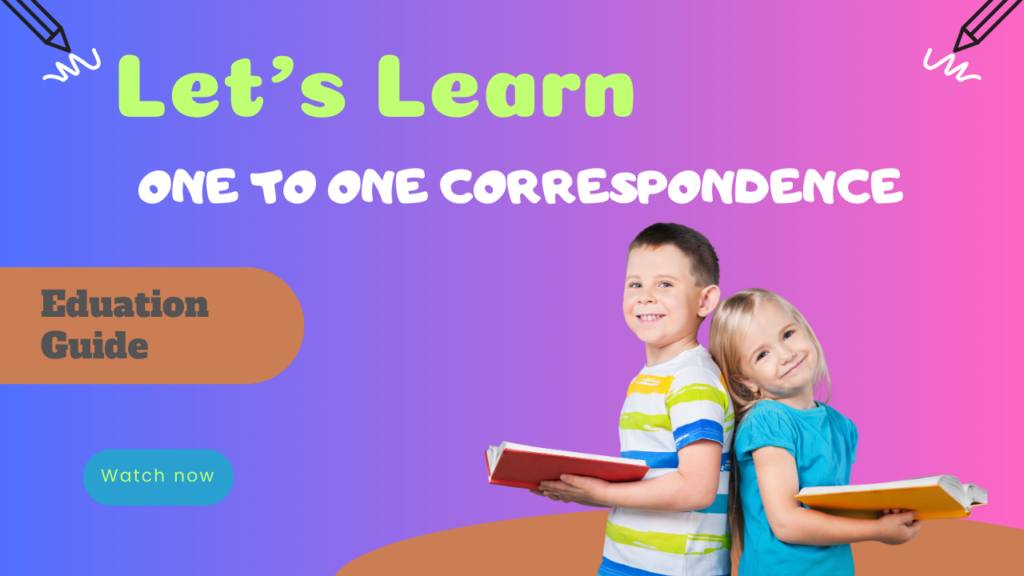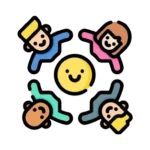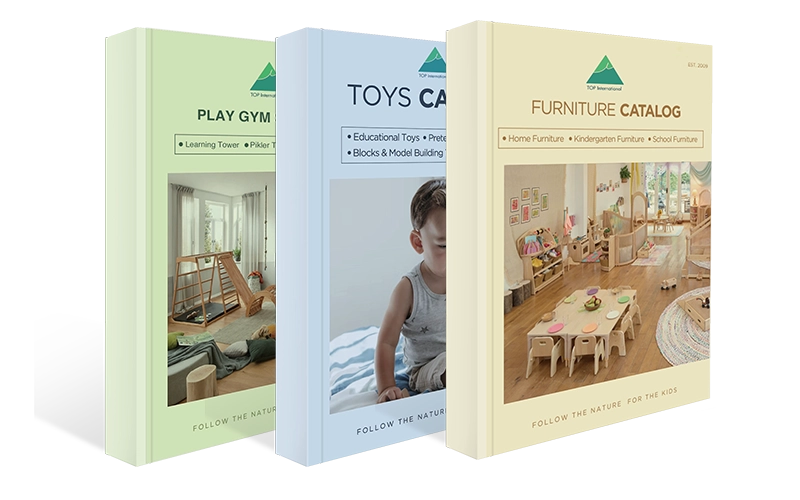Is your child confidently counting “1, 2, 3…”—yet still getting the number of snacks, toys, or shoes wrong? Do they know how to say numbers in the correct order, but not match them to actual objects? Have you noticed they skip, double-count, or lose track when organizing things? These minor signs often point to a missing link in early math learning: one to one correspondence.
One-to-one correspondence teaches children that each number they say represents one object. It’s essential for accurate counting and understanding quantity. This simple concept builds the foundation for addition, subtraction, and logical thinking, while also improving focus, sequencing, and confidence in math. Mastering it early helps children make sense of numbers in real-life situations.
In this article, I’ll explain what one-to-one correspondence is, why it’s essential in early education, how Montessori methods support it, and which materials and activities best reinforce it—whether you’re setting up one classroom or sourcing for an entire preschool.

What is One to One Correspondence?
Imagine an airport boarding system where each passenger is assigned one specific seat. The system ensures that no seat is duplicated and none is left empty — every person has one, and only one, place. Without counting the passengers or the seats, airline staff can confidently say: the numbers match. This real-world application of one-to-one correspondence is foundational in mathematics and logic.
In early childhood mathematics, one-to-one correspondence refers to the ability to match each element in one set with exactly one element in another set, ensuring that every item from both sets is paired with no duplicates or omissions. This concept is essential in helping children move from rote counting to rational counting, where they recite numbers and understand that each number represents one distinct object in a group.
For example, when a child counts “1, 2, 3” while pointing to three apples, they demonstrate one-to-one correspondence if each number word matches exactly one apple — no apples skipped, none counted twice. This ability underpins many other skills in early math, such as understanding quantity, comparing sets, and performing operations like addition and subtraction.
Developing this understanding takes time and practice. Children begin to grasp it through everyday activities — handing out one cup to each friend at snack time, matching shoes into pairs, or placing one puzzle piece into each empty slot. These seemingly simple actions are the groundwork for more complex mathematical thinking in the years to come.

Why Is One-to-One Correspondence Important for Developing Early Math Skills?
One-to-one correspondence in math goes far beyond simply “counting.” It is the first step toward mathematical literacy, and without it, children are stuck reciting numbers without understanding their true meaning. So, what is one to one correspondence in math? The child can link one object to one count—“one block, two blocks, three blocks”—without skipping or doubling. When this concept is clear, real math learning begins.
The importance of this concept shows up early and often. When a child can correctly place one toy per basket or serve one cup per child, they’re actively using one-to-one correspondence. This kind of counting develops logic, sequencing, and visual matching skills. It forms the basis for pattern recognition, number conservation, and eventually, arithmetic.
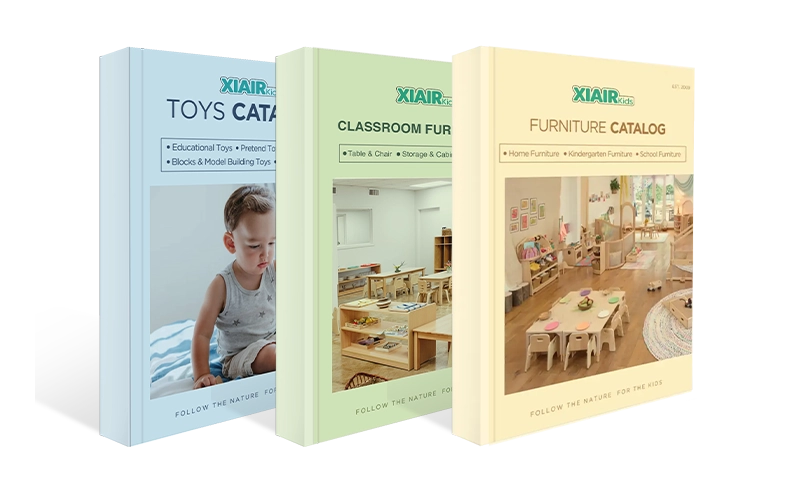
Receive a free catalog and custom layout to help you design your ideal classroom easily.
The Benefits of Learning One to One Correspondence
Learning and mastering one-to-one correspondence provides essential benefits for a child’s cognitive development, mathematical growth, and future academic success. It is much more than just counting—it builds the foundation for how children understand numbers and the world around them.
Builds a Strong Number Sense
At the heart of one-to-one correspondence math is the idea that each number has meaning. When children learn that every object they count represents a single number, they’re not just reciting a sequence but making a connection between symbols and quantities. This is the beginning of true number sense, essential for understanding addition, subtraction, and problem-solving later in life. Without this base, students may struggle with all future math concepts.
Enhances Cognitive Skills
Many one-to-one correspondence activities for preschoolers—such as counting blocks, distributing snacks, or matching socks—strengthen a child’s ability to focus, make connections, and think critically. These activities activate memory, build attention span, and help children recognize patterns and relationships between numbers and real-life items. This kind of thinking is foundational not only in math but across all learning domains.
Develops Fine Motor Skills
You might not immediately associate one-to-one correspondence worksheets or manipulative-based games with motor development, but they play a significant role. When children place one object per square, use tweezers to count small items, or tap to mark objects during counting, they practice precision, hand-eye coordination, and control. These fine motor movements prepare them for writing, drawing, cutting, and other daily classroom tasks.
Supports Holistic Development
In Montessori education, one-to-one correspondence activities are thoughtfully designed to support multiple areas of development, not just math. These activities naturally foster independence, concentration, and a sense of order, all core aspects of the Montessori philosophy. For instance, when a child uses number rods, spindles, or bead chains, they aren’t just counting—they’re engaging in movement, sequencing, coordination, and building self-confidence through repetition and self-correction.
Strong one-to-one correspondence skills lead to more than just accurate counting. They empower children to think logically, act purposefully, and learn across different subjects more clearly and confidently.

What Age Group Is Suitable for One to One Correspondence?
Understanding what age one-to-one correspondence is appropriate is critical to curriculum planning and classroom design. This concept doesn’t emerge overnight—it develops gradually as children’s cognitive and motor skills evolve. Typically, children begin to show signs of grasping one-to-one correspondence between the ages of 2 and 5, but the developmental pace varies from child to child.
Toddlers (Ages 2–3)
At around 2 years old, many toddlers start to engage in simple counting, although they don’t fully grasp what each number represents. You might see them point at a few objects while saying, “one, two, three,” but their pointing may not align with their counting. This is a crucial pre-mathematical stage, where children build the foundational understanding required for one-to-one correspondence.
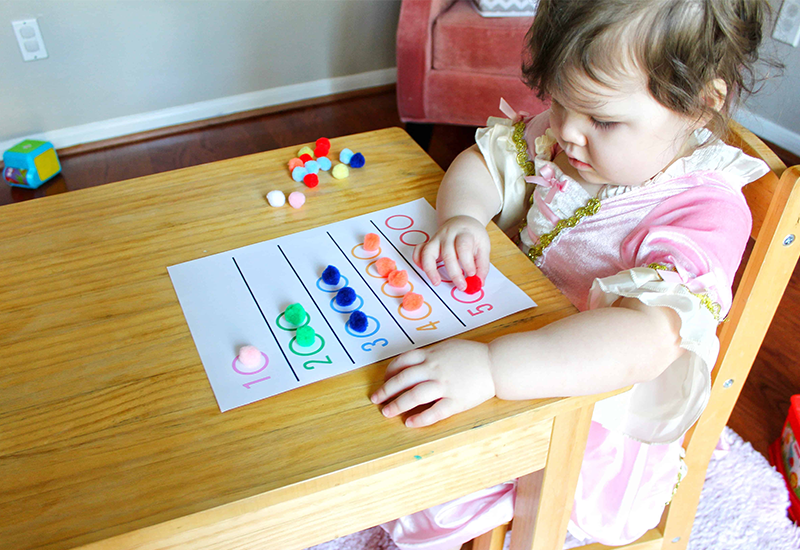
At this age, the goal isn’t perfection—it’s exposure. Activities like singing number songs, offering toddler-friendly manipulatives, and setting up cause-and-effect games are ideal ways to build early number sense. These experiences create the neurological pathways necessary for later success in more structured one-to-one correspondence activities.
Preschoolers (Ages 3–5)
When children reach preschool age (3 to 5 years), they typically become ready to engage in true one-to-one correspondence activities for preschoolers. This is where the connection between numbers and objects becomes more accurate and consistent. Children in this age group can count small groups of items (3–10) and match each object with one number as they count aloud. For example, they might hand out one cup per child at snack time or place one marker in each cup during cleanup.
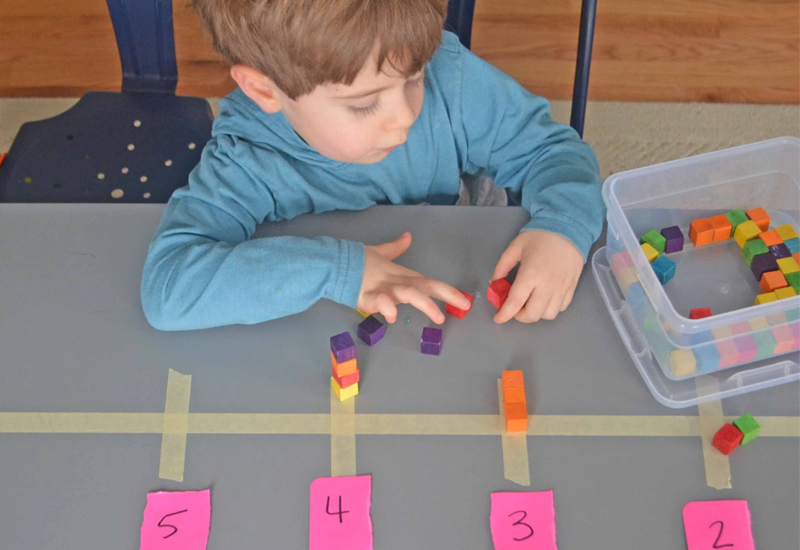
This is also the ideal stage to introduce one-to-one correspondence worksheets, Montessori counting materials, and structured games that reinforce counting with purpose. Children refine number sense and fine motor skills as they precisely manipulate small items, whether using buttons, counters, tongs, or beads.
Kindergarten and Beyond (Ages 5–6)
While many children master this concept in preschool, some continue to refine it in kindergarten. Especially when working with larger quantities, children need to ensure they don’t skip, double-count, or mismatch items and numbers. This is also when one-to-one correspondence is integrated into more complex tasks like comparing quantities, understanding math symbols (+ and -), and solving real-world problems.

For children who need additional support, such as those on individualized education plans (IEPs) or those with developmental delays or autism, one-to-one correspondence may need to be explicitly taught and reinforced through adapted materials and guided instruction.
In short, one-to-one correspondence is relevant from toddlerhood through early elementary years and must be continually supported, reinforced, and adapted as children’s abilities evolve.
How to Teach One to One Correspondence
Step 1: Understand What One to One Correspondence Means
Teaching one-to-one correspondence is not about drilling children with numbers—it’s about helping them build a meaningful relationship between number words and the physical objects they count. This process must be intentional, interactive, and developmentally appropriate to be effective.
Before teaching, it’s essential to define one-to-one correspondence accurately: it’s the ability to match each spoken number with exactly one object, without skipping or double-counting. It’s one of the earliest and most important milestones in developing a child’s number sense. It lays the foundation for one-to-one correspondence math, such as addition, subtraction, and place value.
Many adults assume that if a child can count aloud to 10, they understand math well. However, rote counting does not equal accurate counting. A child may say “1 to 10” and still not understand quantity. The goal of instruction is to bridge the gap between number words and their real-world meaning.
Step 2: Start With Concrete and Visual Materials
Young children learn best through touch and movement. Use manipulatives like blocks, pom-poms, beads, pegs, or Montessori materials such as number rods or spindle boxes. When children move an object with each number, they say they internalize the one-to-one correspondence meaning through sensory experience.

Example: Place 5 apples in a row and model counting by pointing once to each apple:
“One (tap), two (tap), three (tap)…” — and stop when the objects stop. This shows that each object receives one and only one number.
This is also where one-to-one correspondence preschool activities shine. They embed counting in routines like snack, clean-up, or circle time, making learning natural and relevant.
Step 3: Use Consistent Language and Modeling
Verbal reinforcement is crucial. Say things like:
- “Let’s give one crayon to each friend.”
- “We need one napkin for each plate.”
- “Can you count these cubes? Make sure each cube gets one number!”

Model slow, deliberate counting with pointing or touching. Children will mimic this, and their accuracy will improve through guided repetition.
It’s also helpful to ask open-ended questions:
“What do you notice?”
“Did every bear get one button?”
“Are there more cups or more plates?”
These questions develop their ability to self-correct, an essential skill in teaching one-to-one correspondence in math.
Step 4: Differentiate for Individual Needs
Some children grasp the concept quickly, while others—especially those with learning delays or autism—need additional scaffolding. For these students, use structured materials, visual supports, and step-by-step repetition. Consider setting IEP goals focused on one to one correspondence counting to ensure targeted progress.
You can also introduce one-to-one correspondence worksheets with pictures of objects to match and count, using stickers or stamps to reinforce correct alignment. For hands-on learners, use games that involve physical movement, like hopscotch, counting, or passing objects in a group.
Step 5: Embed It in Daily Routines
The best way to teach counting with one to one correspondence is through real-life repetition:
- Count steps while walking
- Count each item in a snack bag
- Distribute one pencil per child
- Put away toys, one per basket
When counting becomes part of the child’s day, they develop fluency without pressure.
In summary, teaching one-to-one correspondence is not just about numbers—it’s about connections, confidence, and cognitive development. With the right strategies, children move from reciting to understanding, which is the real goal of early math education.
Signs a Student Understands One-to-One Correspondence
So, how do we know when a child truly understands one-to-one correspondence? It’s not just about reciting numbers. Instead, it’s about accurately assigning one number to one object—consistently and independently.
In my experience working with early childhood classrooms and educators worldwide, several observable behaviors indicate a child has grasped this essential mathematical concept.
1. Accurate Object Counting
The most obvious and direct sign is that the child can count a set of objects without skipping or repeating any. For example, if there are 6 beads, they will:
- Touch or point to each bead once
- Say one number per item
- Stop counting when there are no more items
This is an example of one-to-one correspondence in action. The child effectively applies the definition of one-to-one correspondence—each object gets exactly one count.
2. Matching Sets Correctly
Another sign is that the child can match items in one group to another with one-to-one alignment. For example:
- One cup per plate
- One bear per bed
- One sticker per square
These one-to-one correspondence examples show that the child understands how two sets can relate equally in quantity, even if they look different. They also show they’re beginning to understand equivalence, a key pre-math skill.
3. Self-Correction Without Prompting
Children who understand this concept will often notice mistakes on their own. If they skip an object or accidentally count one twice, they might pause, return, and start over. This self-correction is an important milestone—it shows the child recognizes when a number-to-object mismatch occurs.
4. Using Consistent One-to-One Strategies
Children who have mastered one-to-one correspondence will naturally start using strategies like:
- Pointing to each object as they count
- Moving objects aside once counted
- Lining objects up to avoid double-counting
These physical strategies demonstrate intentional thinking. They aren’t just reciting—they’re managing the process with purpose and structure.
5. Verbal and Visual Confidence
Children may also begin verbalizing their thinking:
- “I gave one to everyone.”
- “We don’t have enough! There are two kids and one cup.”
Statements like these show rote knowledge and real mathematical reasoning tied to one-to-one relationships. This is often seen in Montessori classrooms during practical life tasks like setting tables, preparing materials, or organizing items.
When these behaviors appear consistently, it’s clear that the child understands what one-to-one correspondence means and is ready for more advanced math experiences like comparing numbers, understanding greater/less than, and working with symbols.
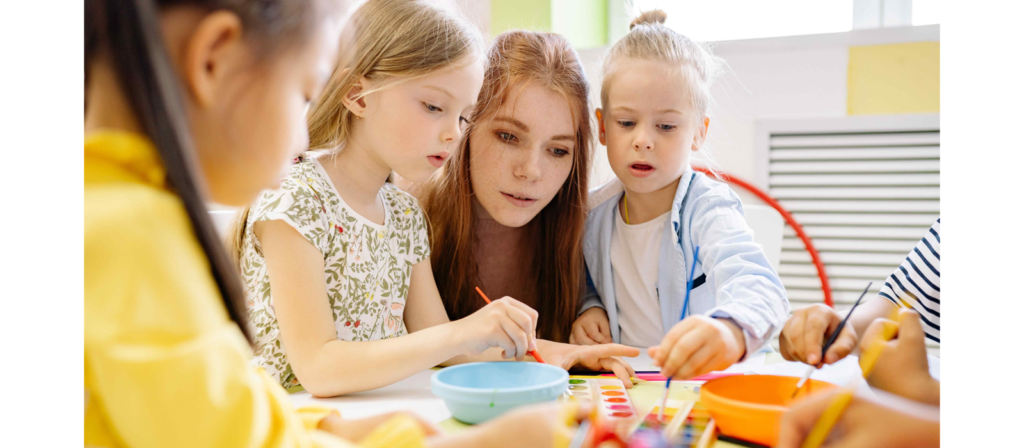
One-to-One Correspondence Activities Ideas
Vehicle Counting Mat Adventure
Activity Description:
Provide children with a mat printed with numbered parking spaces from 1 to 10. Give them a set of small toy vehicles and ask them to park each one in the correct spot based on the number.
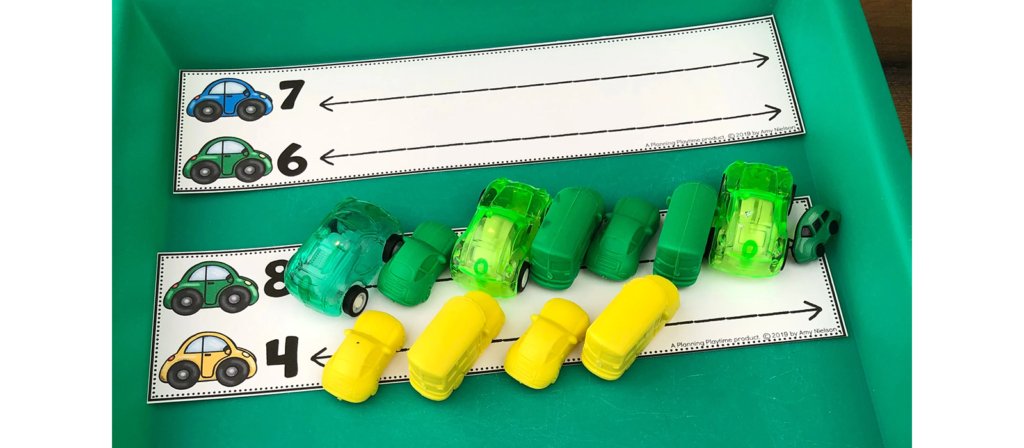
How It Enhances One-to-One Correspondence:
Children match each vehicle to one specific number and space, reinforcing the concept that each object corresponds to a unique count. This visual and physical pairing strengthens counting accuracy and object-to-number relationships.
Animal Habitat Counting
Activity Description:
Prepare cards featuring various animal habitats such as jungle, ocean, and desert, and provide matching animal figurines. Children place one animal into each appropriate habitat based on simple classification.

How It Enhances One-to-One Correspondence:
Children develop early matching and sorting skills by pairing each animal with one corresponding home. This activity lays the foundation for associating one object with one target space or label.
Flower Garden Counting Ma
Activity Description:
Create a colorful garden mat with flowerpots labeled with numbers. As indicated, children are invited to place the correct number of paper or plastic flowers into each flowerpot.

How It Enhances One-to-One Correspondence:
Children count each flower as they place it, ensuring only one per count, which supports both numerical understanding and the logic of equal pairing in a set.
Ice Cream Scoop Counting
Activity Description:
Design cone templates with numbers at the top and offer children colorful pom-poms or felt circles as scoops. They stack the scoops on each cone to match the number shown.

How It Enhances One-to-One Correspondence:
This playful stacking activity helps children visualize quantity and align it with symbols. Each scoop placed corresponds to a single count, reinforcing quantity recognition.
Bug Collection Counting
Activity Description:
Set up plastic jars or paper cutouts labeled with numbers. Children use small insect toys and place the correct number of bugs into each jar based on the label.

How It Enhances One-to-One Correspondence:
Children develop the habit of counting each object as a single unit and pairing it accurately with a set number. This strengthens number awareness and precise matching.
Fruit Basket Counting Mat
Activity Description:
Create mats featuring baskets labeled with numbers and provide a variety of play fruits. Children are instructed to place the correct number of fruits into each basket according to the number shown.
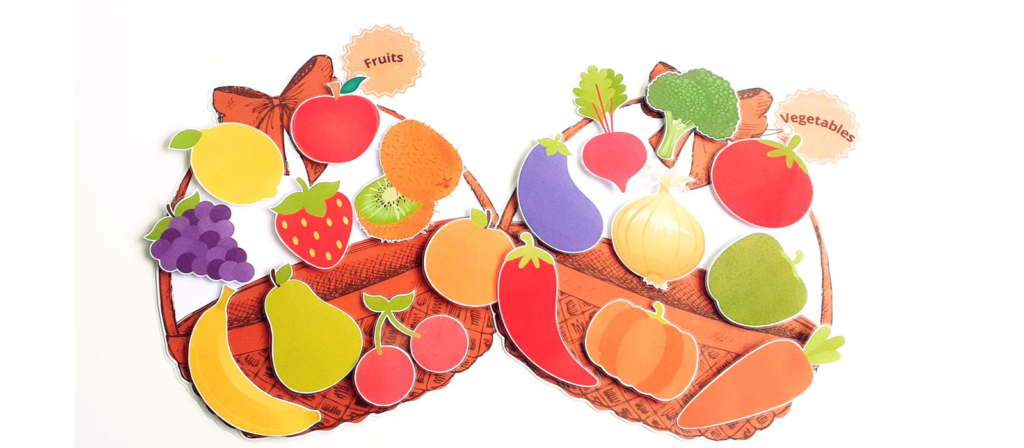
How It Enhances One-to-One Correspondence:
Children learn to count accurately by assigning one fruit per count. This physical matching of item to numeral reinforces their ability to track quantity and avoid over- or under-counting.
Numbered Balloon Pop
Activity Description:
Prepare balloon images with numbers written on them and hand out stickers or markers. Children “pop” the balloons by placing one sticker on each balloon in numerical order.

How It Enhances One-to-One Correspondence:
As children mark one sticker per balloon, they reinforce the understanding that each action represents a single count. This builds consistency and control in early counting.
Playdough Counting
Activity Description:
Give children number cards and playdough. Ask them to roll and form a set of balls or shapes to match the number shown on each card.

How It Enhances One-to-One Correspondence:
This tactile activity strengthens the connection between physical manipulation and number representation, as children count each formed item with deliberate precision.
Counting Nature Items
Activity Description:
Take children on a nature walk and let them collect leaves, stones, or twigs. Back in the classroom, they match their collected items to number cards or trays with labeled sections.

How It Enhances One-to-One Correspondence:
Children directly connect each object from nature to a single count, helping them recognize quantity in the real world and link it to abstract number concepts.
Parking Lot Number Match
Activity Description:
Design a play mat with numbered parking spots and provide toy cars labeled with matching numbers. Children must drive each car into the spot with the corresponding number.

How It Enhances One-to-One Correspondence:
By aligning one car with one parking space, children practice number recognition and object-to-space matching, supporting orderly thinking and quantity control.
Caterpillar Segment Counting
Activity Description:
Offer caterpillar head cutouts labeled with numbers. Children use paper circles or pompoms to create body segments, adding the correct quantity to each head.
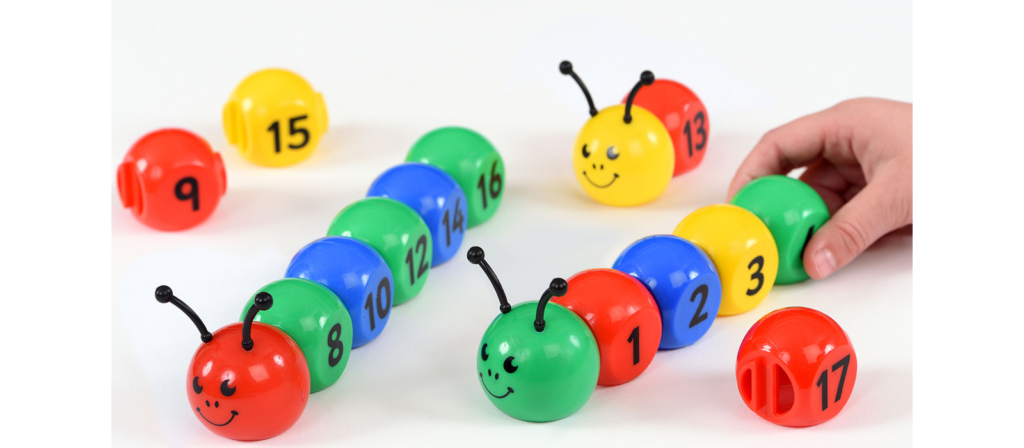
How It Enhances One-to-One Correspondence:
Constructing the caterpillar with one segment per count builds sequencing skills and reinforces the notion of “one number, one object.”
Dice and Cupcake Liner Counting
Activity Description:
Children roll a die and count out small items like beads or buttons to place into cupcake liners, matching the number shown on the die.
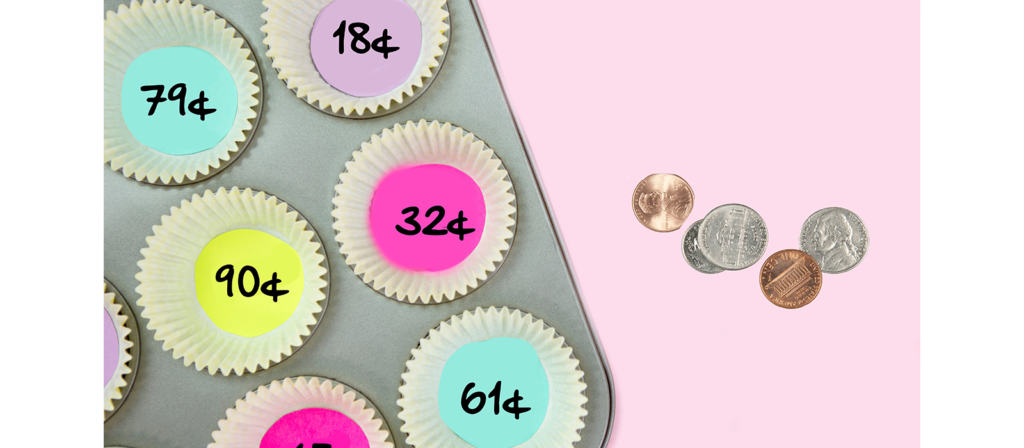
How It Enhances One-to-One Correspondence:
Each roll leads to precise counting, as children must place one item per number dot, promoting real-time application of counting principles.
Dot Painting Countin
Activity Description:
Provide children with dot markers and numbered worksheets. Instruct them to create the correct number of colored dots in each section of the sheet.
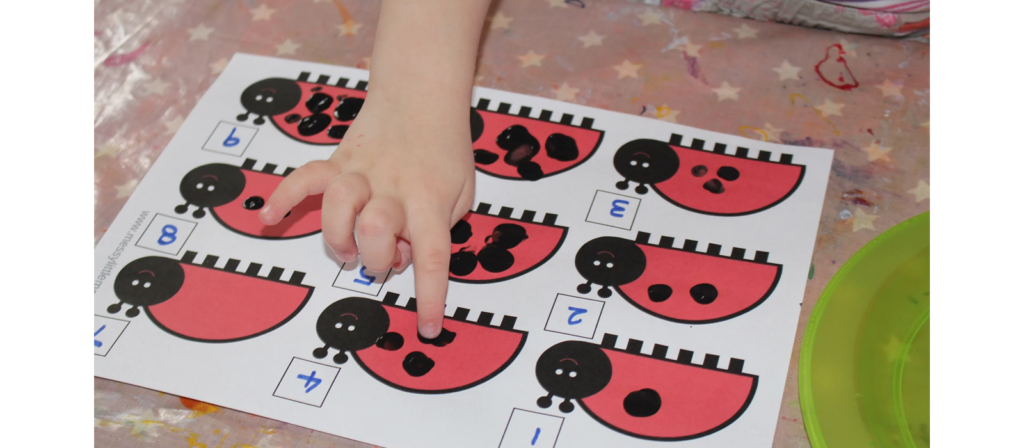
How It Enhances One-to-One Correspondence:
This art-based activity links one motion to one number, developing intentional control and one-to-one association between action and result.
Sticker Dot Countin
Activity Description:
Give children number cards and a sheet of small stickers. They must peel and stick the correct number of dots next to each numeral.
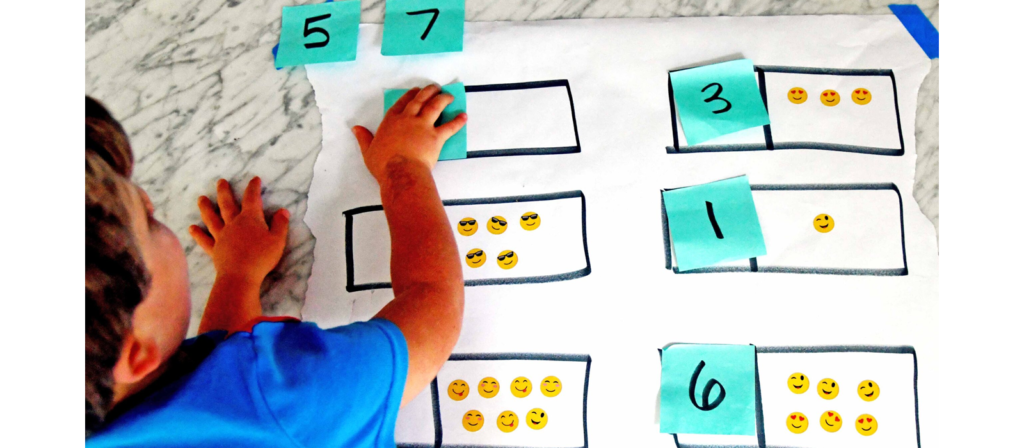
How It Enhances One-to-One Correspondence:
Each sticker placed reinforces the child’s ability to match quantity to a visual number, supporting accuracy and focus during counting tasks.
Connect the Dots by Counting
Activity Description:
Distribute connect-the-dot worksheets with numbered points. Children must draw lines between the numbers in sequence to complete the picture.

How It Enhances One-to-One Correspondence:
Each number leads to one action—drawing a line—encouraging controlled, sequential movement that mirrors numerical logic.
Bead and String Patterns
Activity Description:
Provide number cards and pipe cleaners or strings. Children are asked to thread the correct number of beads onto each string based on the given number.

How It Enhances One-to-One Correspondence:
Each bead added corresponds to a single count, giving children tactile reinforcement of quantity. This fine motor task also encourages attention to counting accuracy.
Number Fishing
Activity Description:
Create paper fish with numbers and attach paper clips. Children use a magnetic fishing rod to catch a number, then collect that many counters or tokens to match.

How It Enhances One-to-One Correspondence:
This interactive game promotes active counting as children match a caught number to a specific quantity of objects, reinforcing symbolic and physical pairing.
LEGO Color Sorting and Counting
Activity Description:
Set out color-coded containers labeled with numbers. Children sort LEGO bricks by color and place the correct number into each labeled container.

How It Enhances One-to-One Correspondence:
Combining sorting and counting helps children associate each brick with a single count while also reinforcing color and quantity discrimination.
LEGO Count and Build
Activity Description:
Provide children with LEGO instruction cards featuring numbers and a shape to build. Children use exactly the number of bricks shown to construct each model.

How It Enhances One-to-One Correspondence:
Each block represents one unit of the total, helping children build an internal understanding of how quantity directly translates into construction.
Count and Clip Cards
Activity Description:
Offer cards with images of objects (e.g., apples) and three number choices at the bottom. Children count the objects and use a clothespin to clip the correct number.

How It Enhances One-to-One Correspondence:
Children must count each object once and select the corresponding number, promoting focused attention and precise quantity matching.
Storybook Counting
Activity Description:
Read a picture book with clearly illustrated objects (e.g., 5 ducks, 4 buttons). Pause and encourage children to count the items aloud or with counters.
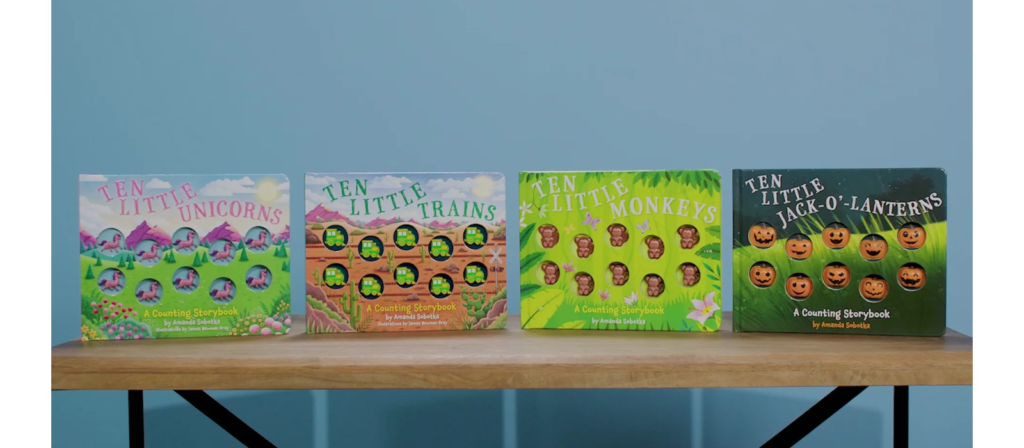
How It Enhances One-to-One Correspondence:
Pairing narrative with active counting engages both comprehension and number sense. It helps children match spoken numbers to visual quantities in context.
Number Puzzle Solving
Activity Description:
Give children puzzle pieces that feature numbers and matching quantities of illustrated objects. They fit the pieces together to complete the correct number-object match.

How It Enhances One-to-One Correspondence:
Children visually connect numbers to their quantities, reinforcing set size recognition and the idea that each object relates to one numerical value.
Numbered Hopscotch
Activity Description:
Create a hopscotch layout with numbers written in each square. Children jump and say the number as they land on each spot in sequence.
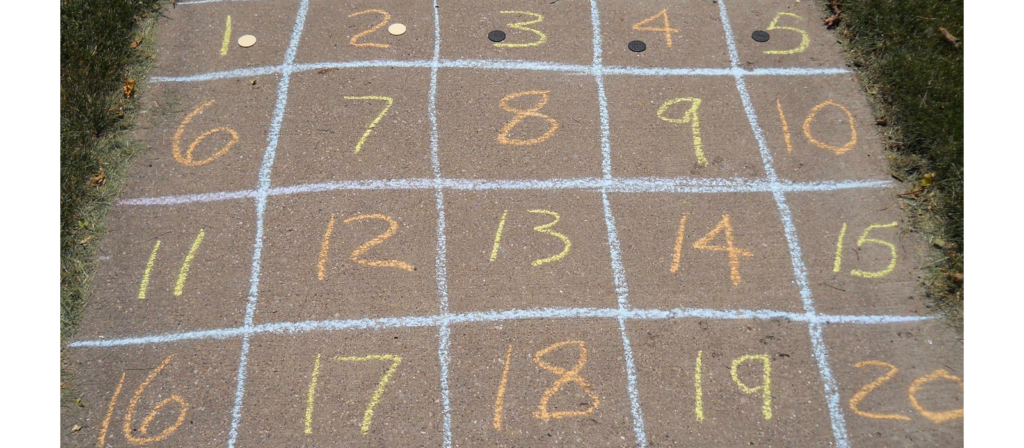
How It Enhances One-to-One Correspondence:
Jumping one time per number strengthens physical coordination with numerical sequence, turning movement into a counting experience.
Number Piñata
Activity Description:
Prepare small bags or boxes labeled with numbers. Children choose one and remove the exact number of small toys or treats to match the number shown.

How It Enhances One-to-One Correspondence:
This playful activity makes counting exciting while reinforcing the idea that each number corresponds to a specific quantity — no more, no less.
Pipe Cleaner Counting Beads
Activity Description:
Give children pre-cut pipe cleaners and numbered tags. Children count out beads and thread them onto the pipe cleaners to match the numbers provided.

How It Enhances One-to-One Correspondence:
Threading one bead per count builds coordination and ensures that each number is represented physically and consistently by one object.
How the Montessori Method Supports One-to-One Correspondence
In a Montessori environment, one-to-one correspondence is not treated as an isolated math skill—it’s integrated naturally into everyday learning experiences. Unlike traditional education, where children might be taught counting through worksheets or rote drills, Montessori emphasizes hands-on, sensory-based learning, which makes one-to-one correspondence a daily and meaningful process.
Built into the Materials
Montessori math materials are specifically designed to embody mathematical principles in concrete form. Tools such as:
- Number rods
- Spindle boxes
- Bead chains
- Seguin boards
…are all classic Montessori examples of one-to-one correspondence in math. These materials allow children to see, touch, and manipulate quantities, aligning each physical piece with a single number. For example, when using the spindle box, a child counts the exact number of spindles corresponding to a numeral—one spindle per space, reinforcing the core concept.
This tactile process is far more effective than simply seeing digits on paper. Children are internalizing mathematical meaning through direct experience.
Rooted in Practical Life
Montessori pedagogy supports counting with one-to-one correspondence from the earliest age through math materials and daily tasks. When children:
- Set the table with one plate per chair
- Hand out one napkin per child
- Place one puzzle piece per outline
They engage in one-to-one correspondence activities for preschoolers daily without needing to “do a math lesson.”
This approach reflects Montessori’s belief that math is everywhere and that children learn best when they relate it to real, purposeful actions.
Supports Independent Learning
Montessori classrooms are structured for independent exploration. Materials are self-correcting, meaning children get instant feedback when making mistakes. This encourages them to self-monitor and self-correct—an essential part of understanding how to teach one-to-one correspondence developmentally and respectfully.
For example, if a child places too many counters on a numeral card, the materials will not “work,” and the child will recognize the mismatch. This experience strengthens both math skills and problem-solving confidence.
Aligned with Developmental Needs
Montessori teaching supports early childhood development by matching the learning environment to the child’s sensitive periods for order, movement, and coordination. One-to-one correspondence naturally fits into these periods. Montessori guides (teachers) introduce these experiences at the right developmental window, typically around ages 3 to 5, when children are ready for concrete logic and number formation.
Because of this intentional design, Montessori students are often more confident in early math and demonstrate a clearer understanding of quantity, sequence, and order—all of which begin with mastering one-to-one correspondence.
Montessori Materials That Reinforce One-to-One Correspondence
When building strong one-to-one correspondence skills, the right materials make all the difference. At TOP Montessoris, we specialize in manufacturing and supplying authentic Montessori and Reggio-inspired materials and furniture that align with the developmental needs of early learners. For school founders, procurement officers, and kindergarten directors looking for high-quality and competitively priced educational tools, our product line offers everything needed to teach this essential math concept effectively.
Here are several Montessori math materials we produce, specifically designed to strengthen children’s ability to count, match objects, and internalize number meaning accurately.
1. Number Rods
Our durable, color-segmented number rods help children visualize and physically experience the progression of numbers from 1 to 10. As children touch and count each section of the rod, they clearly understand what one-to-one correspondence in math means. These rods are crafted from solid wood and finished with child-safe paint—ideal for daily classroom use.
- Smooth, durable finish ideal for long-term use in group settings
- Perfect for teaching counting one to one-to-one correspondence
- Reinforces quantity and order through tactile exploration


Receive a free catalog and custom layout to help you design your ideal classroom easily.
2. Spindle Boxes
The spindle box helps children associate symbols with quantities. Children place the correct number of wooden spindles into labeled 0–9 compartments. For instance, they must place three spindles in the section marked “3”, reinforcing the idea that each number equals a specific, countable quantity.
- The act of placing one spindle per count directly teaches one-to-one correspondence.
- Children learn to group quantities and understand the concept of zero (placing no spindle in that compartment).
Spindle boxes benefit children who need repetitive, tactile learning to fully grasp one-to-one correspondence in math.
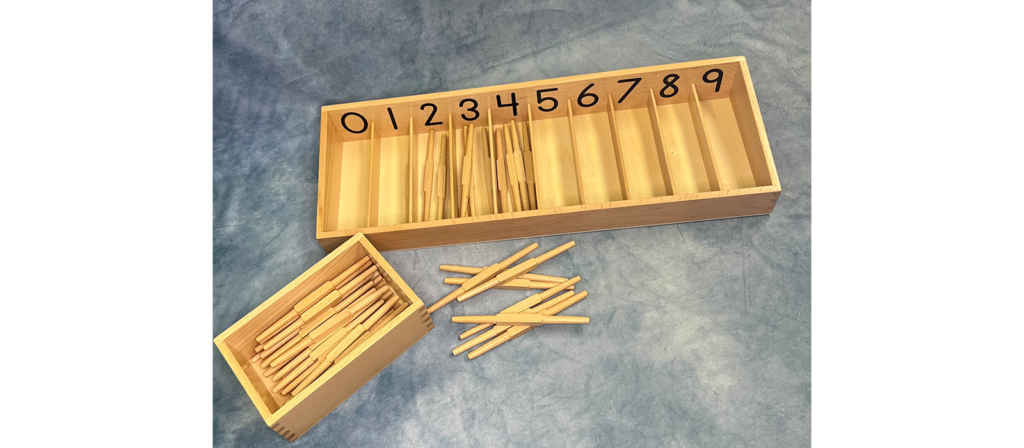
3. Cards and Counters
This elegant yet straightforward activity combines numerals (1–10) with a matching number of red counters. Children lay out cards in order, count out, and place one counter below each numeral, practicing precise alignment.
- Reinforces one-to-one correspondence activities that preschool-level learners can do independently
- Builds sequencing, quantity recognition, and even odd and even number awareness
- Visualizes symbol-to-quantity relationships, bridging abstract numbers and real objects

By pairing our furniture systems with matching Montessori math tools, kindergartens can create a seamless environment where children learn math through movement, repetition, and independence while staying within budget.
Whether you’re sourcing for one school or furnishing an entire chain of kindergartens, we provide:
- Factory-direct pricing
- Full classroom solutions
- Global shipping and logistics support
- Customized bulk orders for your curriculum needs
View more of our Montessori Materials
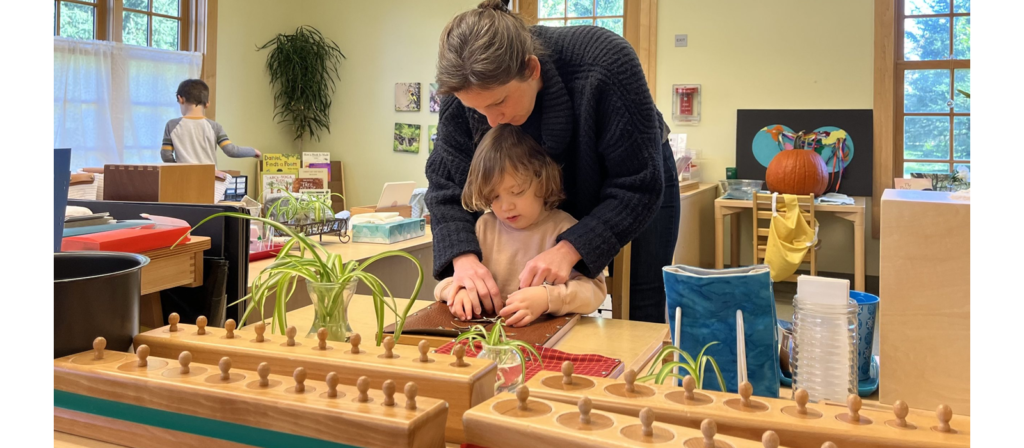
Frequently Asked Questions (FAQ)
What can you do if a child is struggling with one-to-one correspondence?
Use hands-on activities with real objects, slow verbal modeling, and counting games. Focus on movement-based learning before worksheets. Repetition and visual support are key.
What is the goal of the one-to-one correspondence IEP?
To help children consistently match one number to one object. It supports early math development and prepares them for addition, subtraction, and comparing quantities.
Can a 2-year-old count to 10?
Yes, but usually through rote memorization. Most 2-year-olds cannot yet apply one-to-one correspondence without adult guidance.
What is the youngest age for Science Activities for Preschoolers?
A science activity for preschool can begin as early as 18–24 months, using simple sensory play, water experiments, or nature walks to spark curiosity and develop early observation skills.
What are the five counting principles?
- One-to-one correspondence
- Stable order
- Cardinality
- Abstraction
- Order irrelevance
These are the foundation of early number sense.

Receive a free catalog and custom layout to help you design your ideal classroom easily.
Conclusion
Understanding and teaching one-to-one correspondence lays the foundation for a child’s lifelong relationship with math. It helps children move from memorizing numbers to truly understanding what they mean—one item, number, or concept at a time. As explored throughout this article, it supports counting accuracy, logical thinking, spatial reasoning, and real-world independence, whether guiding toddlers or preparing preschoolers for kindergarten, mastering one-to-one correspondence in math is essential in early education.
For schools and education providers, creating an environment where this learning can happen effectively requires more than good intentions—it requires the right materials. That’s why at TOP Montessoris, we design and manufacture a full range of Montessori math materials and classroom furniture that support every stage of early mathematical development, including one-to-one correspondence. With our factory-direct model, international logistics support, and a deep understanding of pedagogy and practicality, we help schools worldwide build better learning spaces—starting with the basics, and growing from there.

